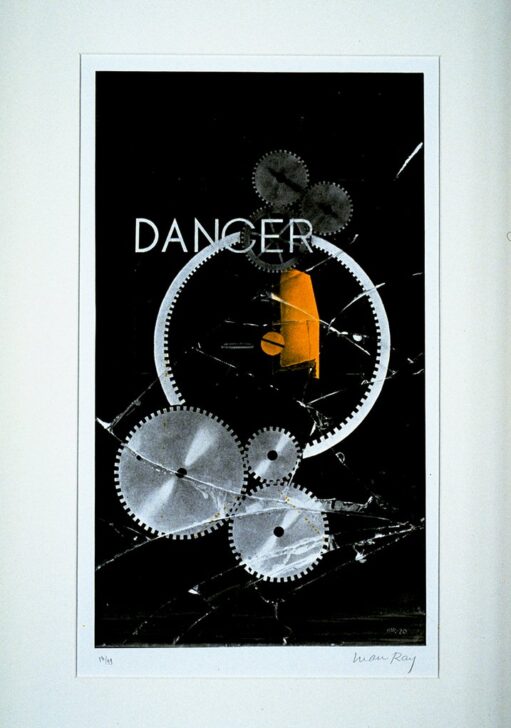Danger–Dancer ILXT
Man Ray

Description
Subject Matter:
Danger-Dancer ILXT is a recreation of a 1920 painting on glass. Depicting dance and performance was not new to Many Ray. In 1916 he painted The Rope Dancer Accompanies Herself with Her Shadows after seeing a tightrope dancer at a vaudeville show.
Man Ray was best know for his photography and was well known for his Rayographs. Although an American artist, Man Ray lived and worked in Paris for much of his career (he initially moved to Paris in 1921, left in 1940, and then returned in 1951); Man Ray was close friends with Marcel Duchamp. The gears in this print are reminiscent of Duchamp's "Chocolate Grinder" and the broken glass reminiscent of Duchamp's "Large Glass." In 1925, Man Ray (along with Jean Arp, Giorgio de Chirico, Max Ernst, André Masson, Joan Miró, and Pablo Picasso) exhibited at the first Surrealist exhibition which was at the Galerie Pierre in Paris.
Physical Description:
This print has a black background with seven gears of various sizes floating in the blackness. There are three softer greyish ones clustered togther at top of print, three shiny ones on the bottom. Both of these clusters have their gear teeth on the exterior circumference. The last large gear in the center has the gear teeth on the interior of the circumference. There is a golden yellow object within the center gear; and the word "DANCER" is near top of print where the "C" intercepts the large gear, making it possible to read it as "Danger."
Usage Rights:
If you are interested in using an image for a publication, please visit https://umma.umich.edu/request-image/ for more information and to fill out the online Image Rights and Reproductions Request Form.